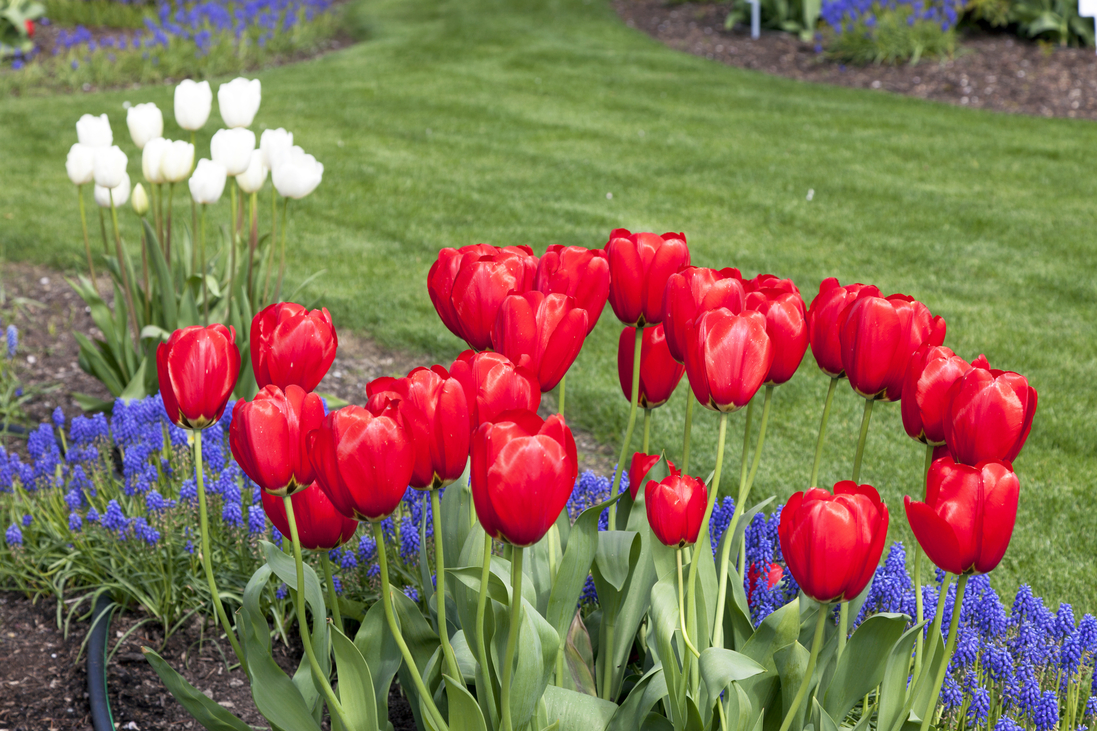Tips to Prepare Your Landscape This Spring
When it is cold outside, the desire to do outdoor work often fizzles. March brings warmer temps and all the signs of Spring in Clayton, NC. It is a pivotal time of year for your lawn and plants, as it essentially sets the tone for the remainder of the year. If you take extra care of your landscape during the spring months, you will promote healthier, better quality growth with fewer maintenance issues.
BEFORE SPRING
Inspect Lawn
As soon as you can stand to be outside for any extended amount of time, take a walk around your lawn. Note bald spots, weeds, or really anything unusual. Think of this as an annual audit of your lawn. The earlier that you notice issues, the easier it will be to fix any problems that you have.
Remove Debris
You will need to remove branches, dead leaves, and other debris so that sunlight and air can touch the grass. Debris can also include any unwanted trash that may have accumulated beneath trees and shrubs. We recommend doing this during the day when the grass is completely dry so as not to compact or damage wet grass.
Aerate Matted Areas
As soon as the coldest temperatures fade, it is a good idea to aerate or rake out areas of thatch. Thatch prevents oxygen and sunlight from reaching your grass and other plants. Leaving this cover on grass can also invite turf diseases such as mold.
Apply Pre-emergent
Pre-emergent is all about the timing. Ideally, it needs to be applied before the ground reaches 55—60 degrees, when weeds have time to germinate. You will want pre-emergent applied in late February through early March. However, North Carolina weather is fickle, so it could be a little later if need be. We are aware that temperature of soil can be a guessing game, so there is a little rule of thumb that is a cue to timing of pre-emergent application:
Watch for the Forsythia bush to bloom! These shrubs bloom a few weeks before crabgrass germinates. This is the window that you want to apply pre-emergent.
One of the biggest ordeals with pre-emergent is that it is non-selective. This means that it can do a great job getting rid of crabgrass and other grassy weeds, but it will not distinguish between these weeds and actual grass seeds. For already established grass, there is no need to worry. Just like pre-emergent will not work on germinated weeds, it will not harm mature grass, either. However, you will have to wait at least 8 weeks after applying pre-emergent to plant new grass seed.
Clean Gutters
Fall and winter have likely left quite a bit of leaves and other debris in your gutters. While it is not the most glamorous of chores, filled gutters can result in costly home water damage. Before the "April Showers," it is a good idea to make sure your gutters are clear for rainfall.
DURING SPRING
Test Soil
A soil testing kit can be purchased at most of your neighborhood's hardware or lawn stores. This test is to determine if your soil is acidic, alkaline, or neutral. You will need to know this information before purchasing a fertilizer. This will also guide you to what bio-nutrients your lawn is lacking.
Winter can cause the pH levels in soil to become acidic, making it hard for your grass to thrive. When testing your soil, if you find that it has a pH below about 6, a thin layer of lime can be added to increase the pH level.
Fertilize Lawn & Plants
Encourage lawn growth with a spring fertilizer. The timing for fertilizer can be delicate, as lingering cold or early heat can stress grass. There is a lot of debate on this, but grass will receive fertilizer well in early spring. It is basically feeding on everything in sight because it has been dormant. The key is to apply light layers so that strong, healthy grass will grow.
Prune Trees & Shrubs
It is important to inspect trees and shrubs. Winter weather can damage limbs and branches, weakening trees and putting your home at risk. Spring is the prime time for severe storms in Johnston County and surrounding areas, so it is best to inspect and prune weak branches before the lightning and wind bare down.
Mowing Maintenance & Essentials
You will need to give your mower a once-over now that it is time to start using it again. This includes sharpening your blades, changing the oil, and emptying any old, remaining gasoline. A sharp blade is essential. If it is dull, you run the risk of the mower tearing off the tops of the grass blades instead of a nice, clean cut.
At this critical time in your grass's life cycle, remember it is always recommended to only cut 1/3 off the top of the grass on any given mow. This prevents weeds from germinating and promotes deeper root development in your grass.
Enhance your landscaping today!
Contact the experts at Carolina Curb Appeal today to see how our landscaping services can help you this Spring!



